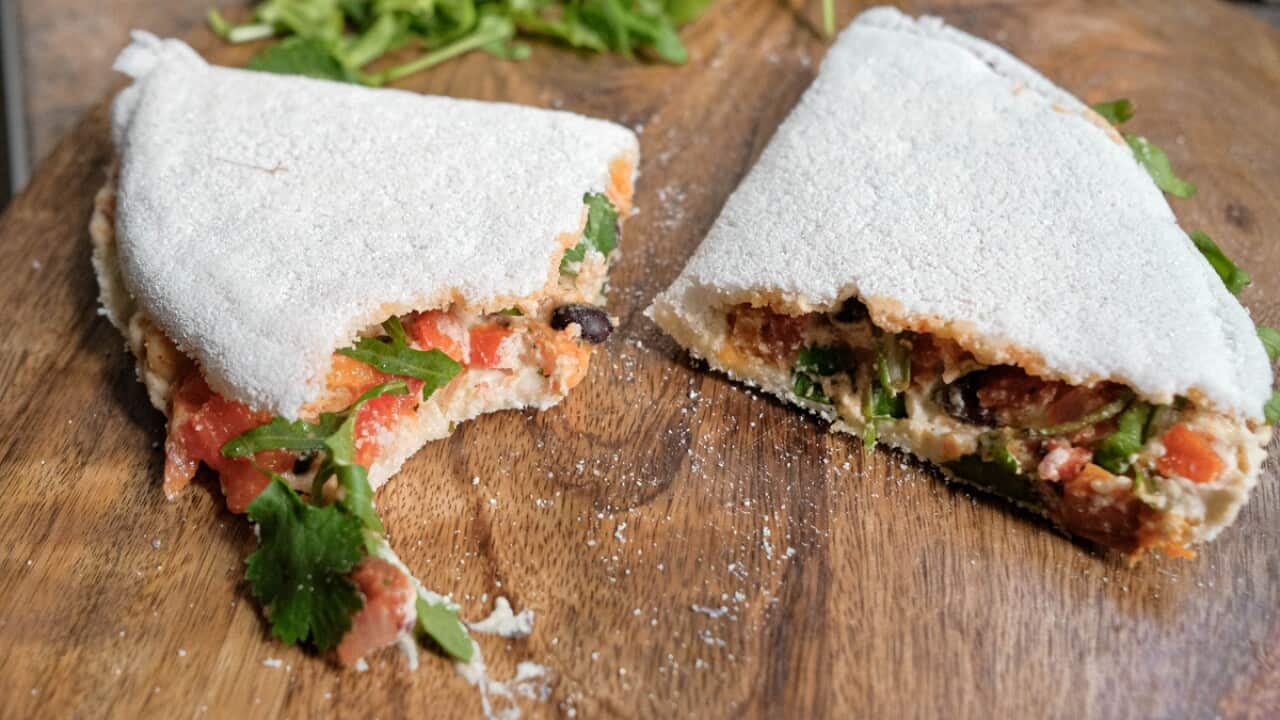Walkthrough any street market in Brazil and it won’t be long before you come across a vendor selling tapioca crepes. This traditional South American snack is a cross between a tortilla, an omelette and a pancake. It has long been a staple ingredient in the Brazilian Indigenous diet and over the last decade has seen a dramatic rise in popularity.
Tapioca crepes are prepared with tapioca flour, which is made of starch extracted from the root of a cassava plant. This native shrub grows abundantly in South America, unlike wheat, which is difficult to grow due to drought conditions and infertile soil.
INTRODUCING CASSAVA
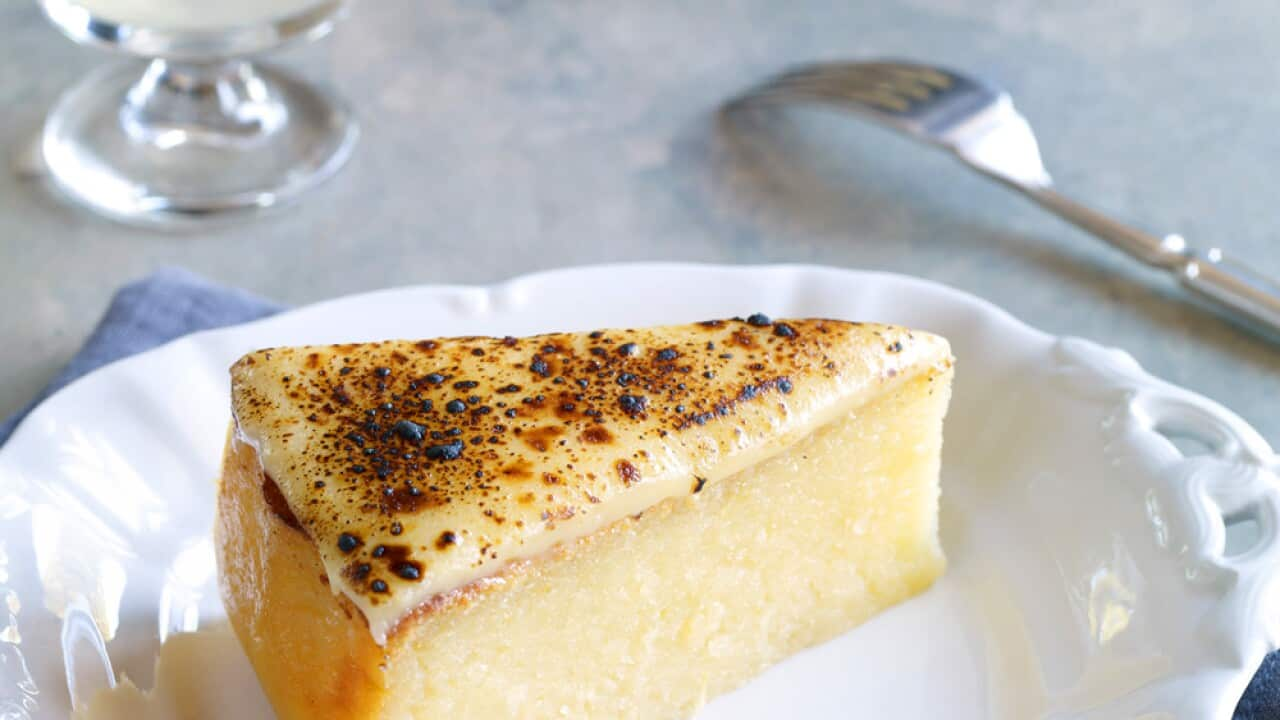
Explore cassava in everything from comforting stews to cake to chips
To make a crepe, the tapioca starch is moistened with water then sifted through a fine sieve over a hot pan where it quickly melts together to form a crepe. The crepe can then be packed with a variety of sweet or savoury fillings, traditionally egg, meat and cheese.
Two decades ago, tapioca crepes were only available in the north and northeast of Brazil where they originated. Renata Santoniero grew up in the south-eastern city of Sao Paulo and was only introduced to this street food snack later in life. She easily recalls the ground-breaking moment when she tried her first tapioca crepe.
"I travelled to the northeast of Brazil with my family and this very traditional hotel had a woman from that area preparing it for the people in the hotel," Renata recalls. "After that, I could find it on every corner, and I just got obsessed. However, I couldn't find it in Sao Paolo easily at the time. It took years for it to be mainstream there."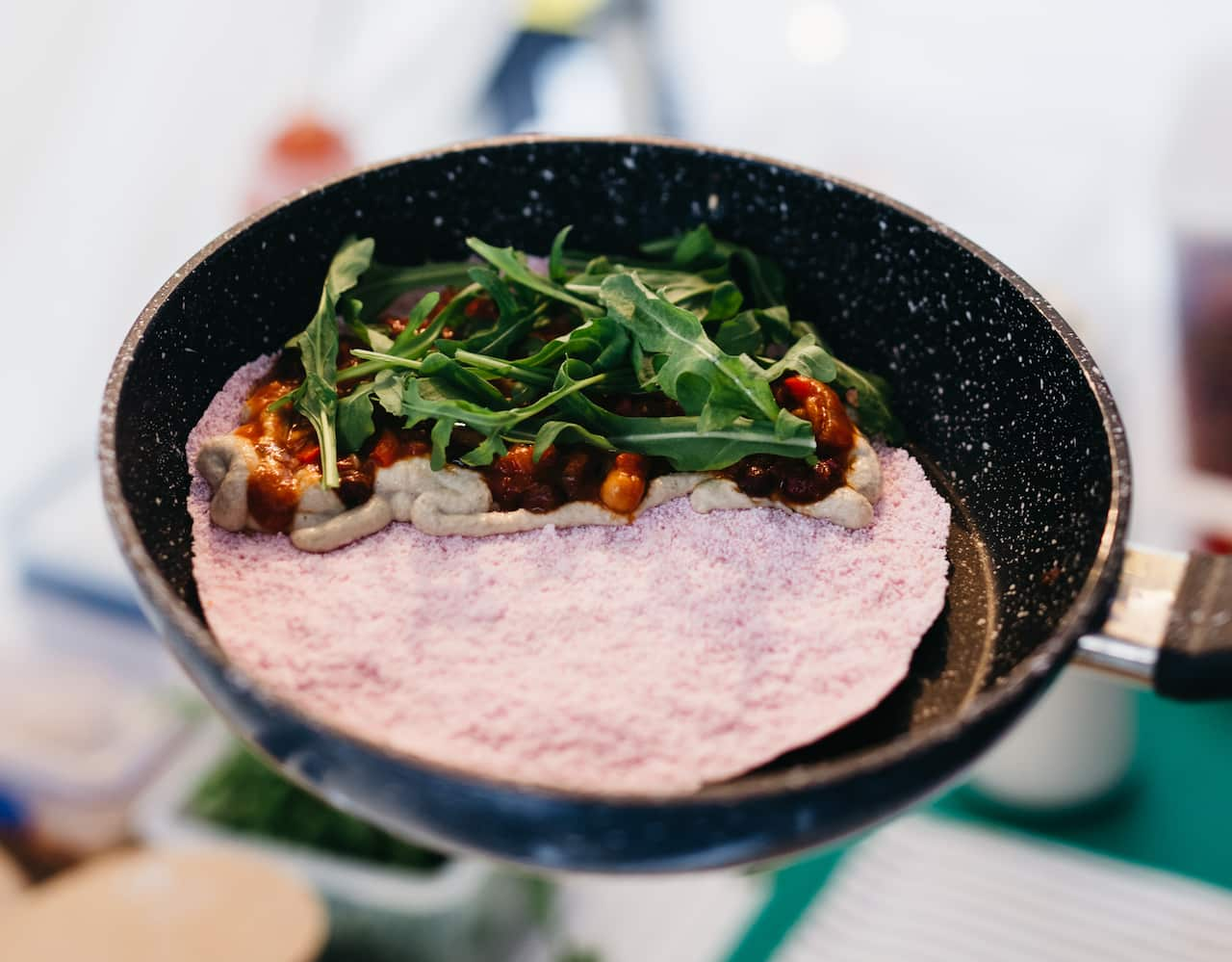 Renata believes the growing popularity of tapioca crepes in Brazil is due to rising trends in the health food space. Tapioca flour is gluten-free, easily digestible and makes a good substitute for bread so is ideal for health-conscious individuals. The crepes have also become viral on Instagram with people sharing innovative recipe ideas and providing tutorials that demonstrate how easy they are to make.
Renata believes the growing popularity of tapioca crepes in Brazil is due to rising trends in the health food space. Tapioca flour is gluten-free, easily digestible and makes a good substitute for bread so is ideal for health-conscious individuals. The crepes have also become viral on Instagram with people sharing innovative recipe ideas and providing tutorials that demonstrate how easy they are to make.

Tapioca crepes are found on street corners in every state of Brazil and now you can find them in Australia. Source: Renata Santoniero
Tapioca crepes can now be found on street corners in every state of Brazil. Many people also make their own by purchasing tapioca starch at the supermarket and preparing it at home. Despite this, most Australians are unfamiliar with this Brazilian culinary symbol.
Renata Santoniero and Bruno Homero are on a mission to bring a taste of their culture into Australian homes. When Renata moved from Sao Paulo to Sydney nine years ago, she was shocked to find that there was no one selling tapioca crepes. Even if she wanted to make them herself, she had to buy imported tapioca flour from Brazil, which was no longer fresh by the time it arrived.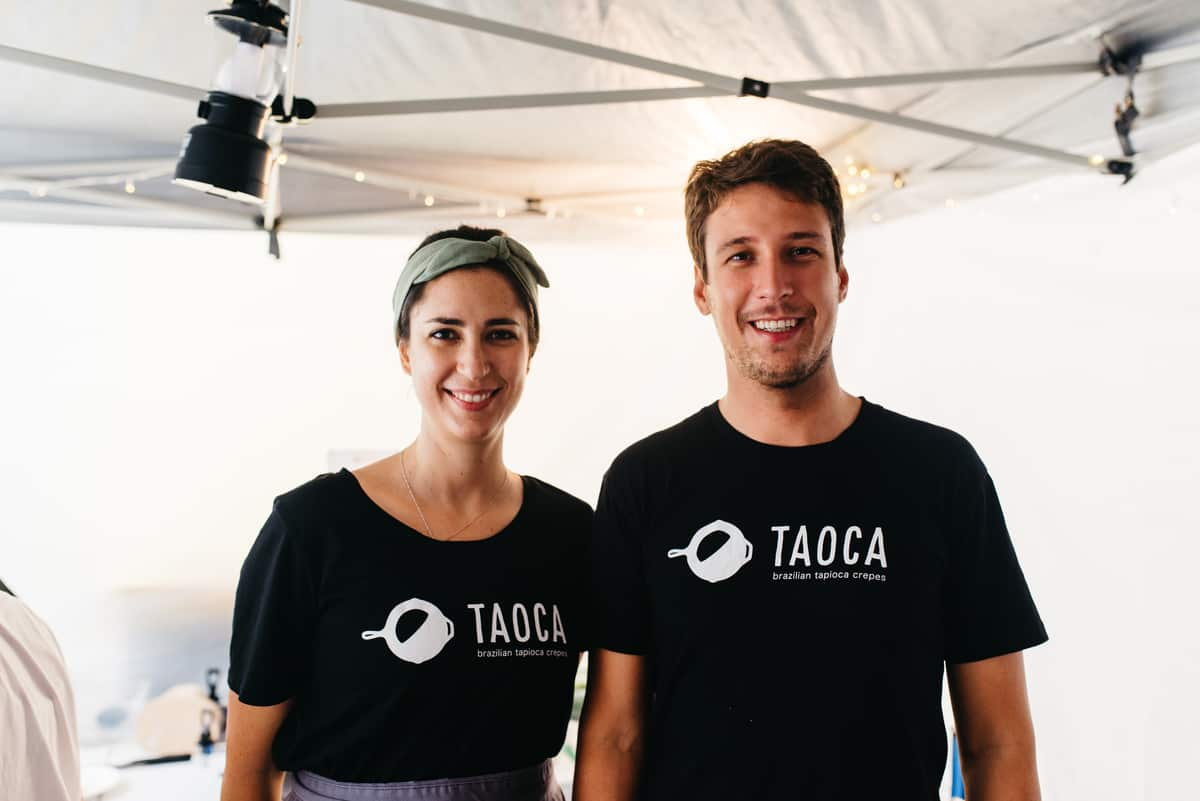 After Renata identified this gap in the market, she and her partner, Bruno, started experimenting with their own tapioca crepe mix.
After Renata identified this gap in the market, she and her partner, Bruno, started experimenting with their own tapioca crepe mix.

Renata Santoniero (left) and Bruno Homero have introduced tapioca crepes to Australia. Source: Renata Santoniero
"We thought there's this amazing product in Brazil that people don't know here. It's very versatile, it's gluten-free, it's vegan, it's affordable and no one's doing it," Renata explains.
We thought there's this amazing product in Brazil that people don't know here. It's very versatile, it's gluten-free, it's vegan, it's affordable.
In late 2019, Taoca was born. The pair hydrate their own tapioca crepe mix which they sell online and at markets across Sydney, along with a variety of freshly made crepes.
The duo believes that these crepes were almost made for the health-conscious Australian lifestyle. Not only are they using their stall to introduce more people to this beloved Brazilian snack, but they are determined to change perceptions about the Brazilian diet.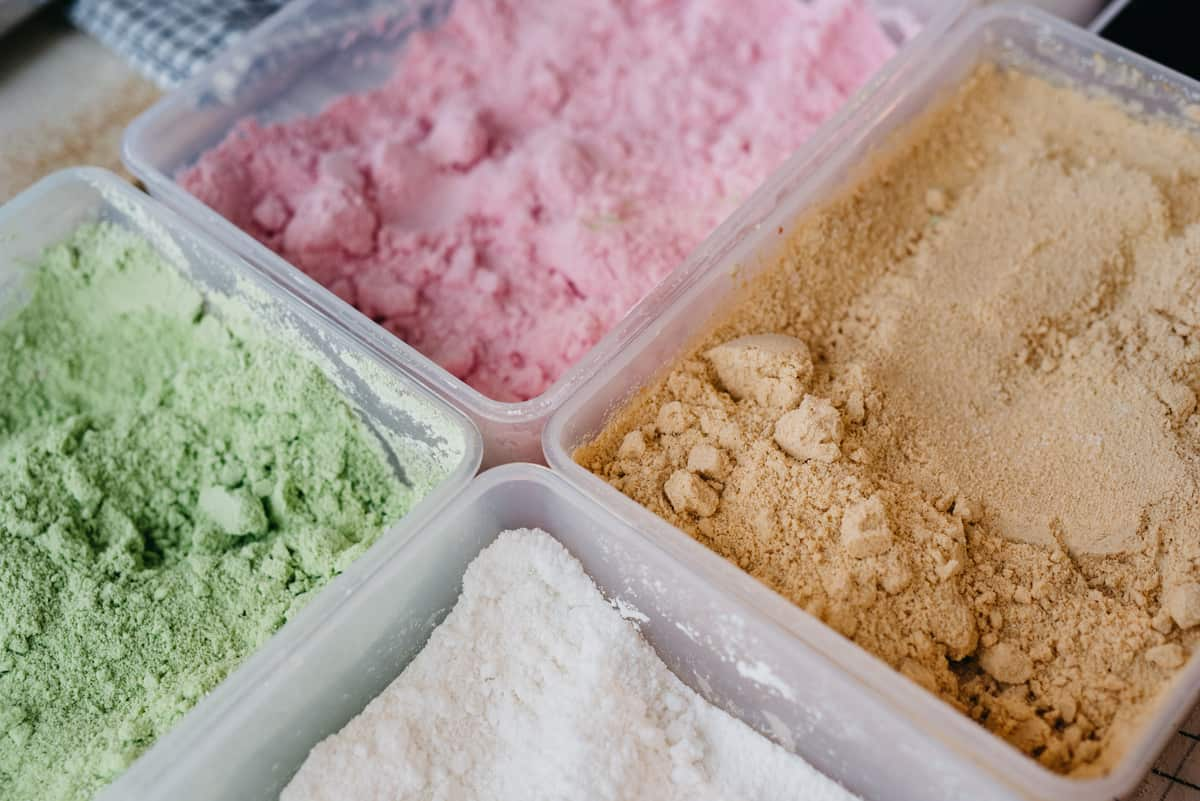 "Every time people talk about Brazilian food, they think about the meat industry," Renata says. "It's such a great opportunity for us to show them a bit more of what Brazilian food is, other than meat."
"Every time people talk about Brazilian food, they think about the meat industry," Renata says. "It's such a great opportunity for us to show them a bit more of what Brazilian food is, other than meat."

Taoca's hydrated tapioca flour comes in different (and oh so pretty) colours. Source: Renata Santoniero
The pair want to showcase how creative and fun tapioca crepes can be, while also being light and healthy. Their colourful crepes come in a range of flavours, which are 100 percent vegan. To achieve the natural colours of the crepes, they hydrate the tapioca flour not only with water but also smoked paprika, beetroot juice and spinach juice. Fillings include their best-selling BBQ pulled jackfruit crepe with Brazilian slaw and roasted cashew nuts, along with a traditional guava paste, cheese and coconut combination.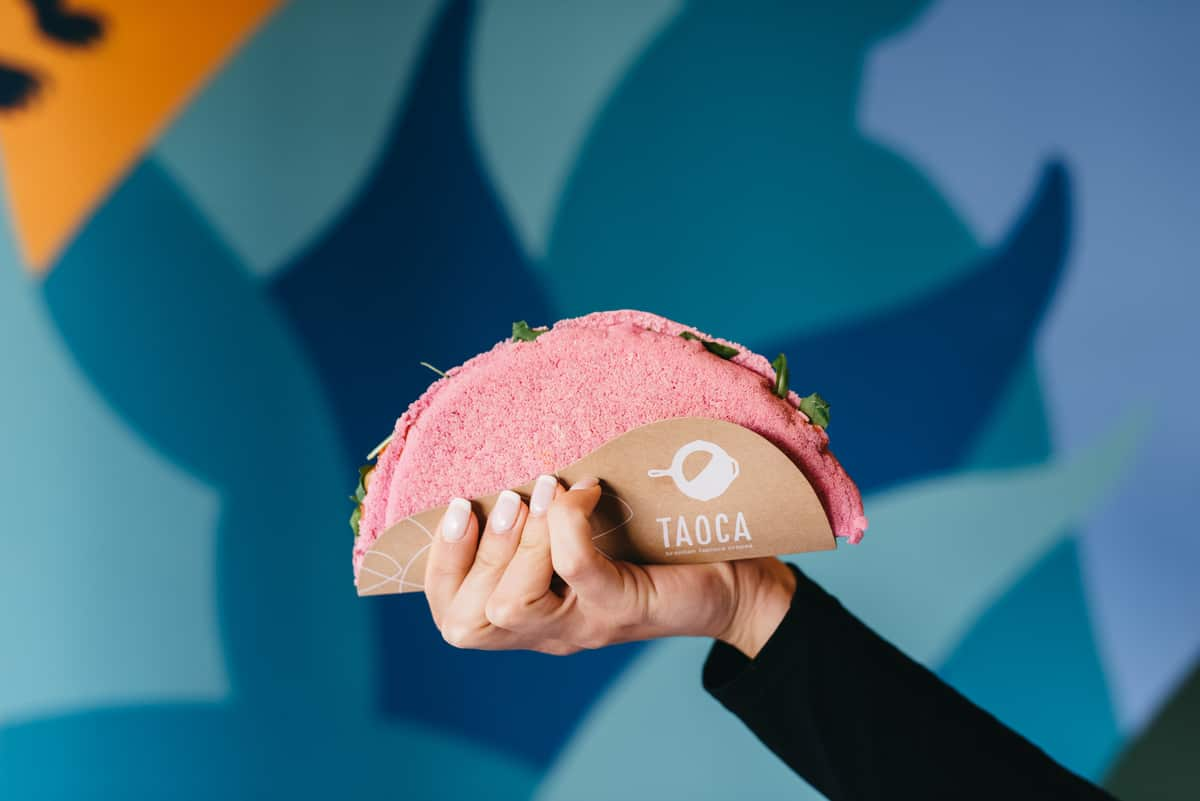 Renata and Bruno love the versatility of tapioca crepes. "It can be breakfast, it could be lunch if you serve it with a salad, it could be dinner," Renata explains.
Renata and Bruno love the versatility of tapioca crepes. "It can be breakfast, it could be lunch if you serve it with a salad, it could be dinner," Renata explains.

Taoca sells tapioca crepes in playful colours, like this one dyed with beetroot. Source: Renata Santoniero
"It could even be an afternoon snack if you make it a bit smaller with banana and peanut butter inside."
The response from Australians so far has been incredible. Renata attributes this to the welcoming and curious nature of the Australian culture to trying new things.
"It's such a great journey for us to be able to now share a bit more of the Brazilian culture here and also introducing some more vegan options to non-vegan eaters," Renata reflects.
The biggest challenges Taoca faces are getting people who've never seen tapioca crepes to try it and encouraging them to make it themselves. However, the future is looking bright, and the pair dream that one day, tapioca crepes will become a pantry staple in Australian households.
Love the story? Follow the author Melissa Woodley here: Instagram @sporkdiaries. Photographs supplied by Renata Santoniero.
Miso eggplant tapioca crepe
Serves 2
Ingredients
Miso Eggplant
- 1 large eggplant (~ 420 g), sliced about 1 cm thick
- 1 tbsp olive oil
- ⅓ cup white miso paste
- 3 tsp finely grated ginger
- 2 tsp toasted sesame oil
- 1 tsp tamari sauce
- 1 tsp white vinegar
- ¼ tsp black pepper
- 2 tsp sesame seeds
Tapioca crepe
- ½ cup hydrated tapioca flour
To serve
- Hummus
- Carrot, peeled into ribbons
- Pea shoots or sprouts
- Edamame
To prepare the eggplant
- Preheat the oven to 210°C. Brush both sides of the eggplant slices with oil and place them on a lined baking tray. Roast the eggplant and flip it once over 30 minutes or until tender.
- Meanwhile, whisk the rest of the miso eggplant ingredients in a small bowl. Smear the top of the eggplant slices with the miso sauce.
- Broil until golden and charred in places for 4–5 minutes. Set aside.
To cook the tapioca crepe
- Sieve the hydrated tapioca flour directly over a 24 cm skillet (we recommend doing it in your sink or on your benchtop to minimise mess). Do not add oil to the pan.
- Place the skillet over medium heat and cook the crepe for 1-2 minutes, or until the edges detach from the pan and underneath is steaming. Turn off the heat.
To assemble
- Spread the hummus and add all the other ingredients on half the crepe.
- Fold the crepe in half and gently press. It is ready to serve.
GET STUCK INTO THIS BRAZILIAN FOOD
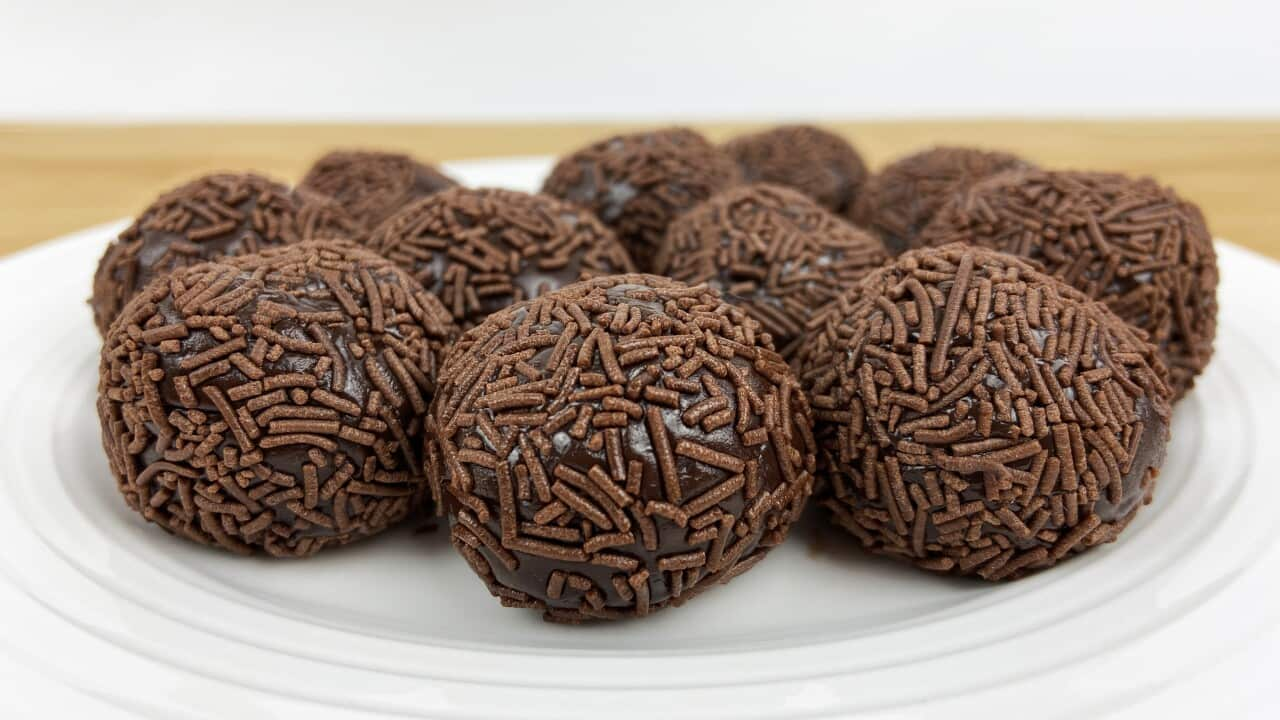
Three-ingredient Brazilian chocolate truffles
Share
SBS Food is a 24/7 foodie channel for all Australians, with a focus on simple, authentic and everyday food inspiration from cultures everywhere. NSW stream only. Read more about SBS Food
Have a story or comment? Contact Us

